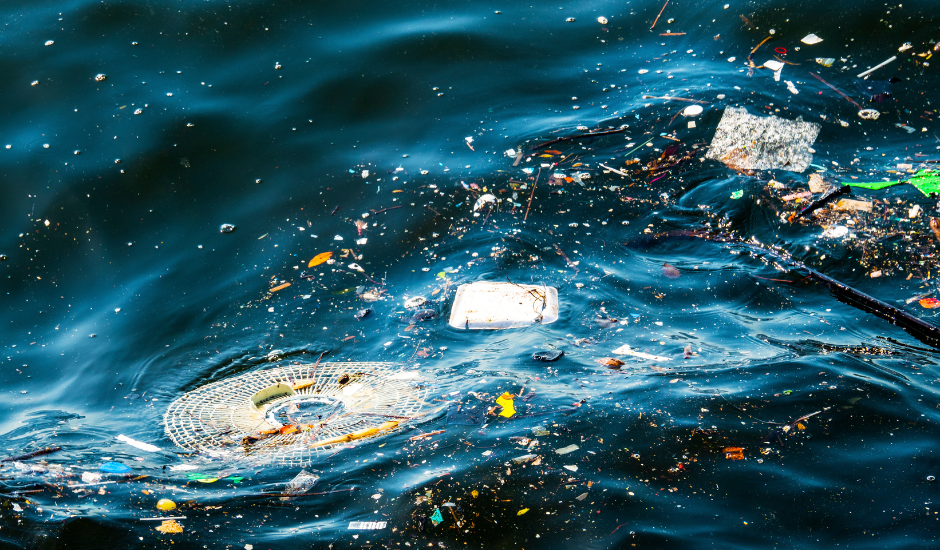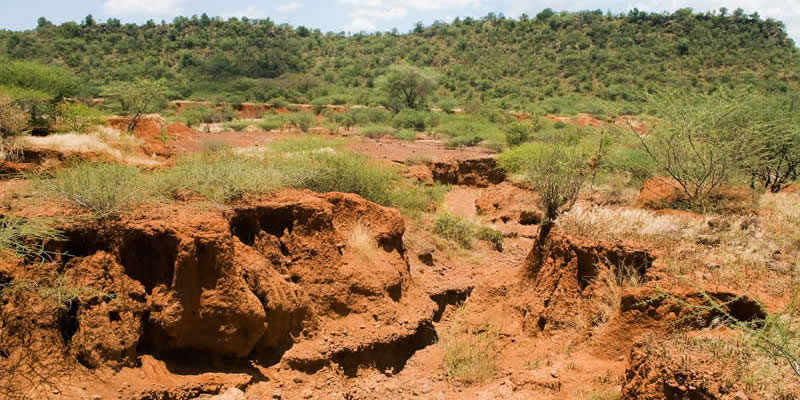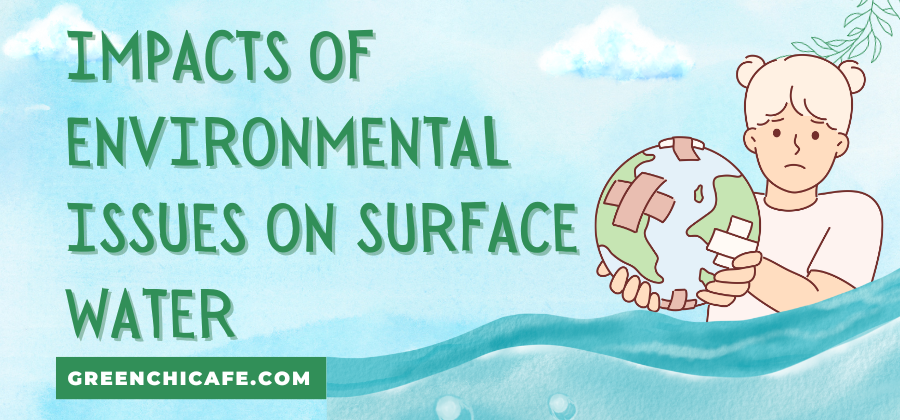Last Updated on June 3, 2024 by Annie Baldwin
Water pollution is a major environmental issue that degrades surface water quality in many ways.
This article explores the key factors that contribute to declining water quality and their impacts.
Impacts of Environmental Issues on Surface Water

Surface water is affected by pollution from industrial, agricultural, and urban sources.
This leads to issues like algal blooms, degraded water quality, and threats to aquatic life.
Major causes are wastewater discharges, fertilizer runoff, and chemical pollutants.
Key Points
- Pollution from human activities degrades surface water quality.
- The main sources are industry, agriculture, and urban areas.
- Wastewater discharges are a major cause of contamination.
Our Opinion
Surface water pollution is a critical environmental problem driven by human actions.
In my view, reducing sources of contamination like industrial and urban wastewater discharges should be a top priority.
We need concerted efforts to limit agricultural runoff and better manage stormwater.
Protecting water quality is essential for ecosystems, wildlife, and human health.
Water Pollution Degrades Surface Water Quality

Several human activities lead to water pollution that harms surface water quality:
- Soil erosion and sedimentation increase turbidity, which reduces light penetration and oxygen levels.
- Excess nutrients from agricultural and urban runoff promote algal blooms, some of which are toxic cyanobacteria that negatively impact wildlife.
- Chemical pollutants like heavy metals and antibiotics alter water chemistry, harming aquatic life. They can bioaccumulate up the food chain.
- Pathogens from untreated sewage and runoff of animal waste can infect both wildlife and humans.
- Discharges of wastewater effluent and industrial waste add oxygen-consuming substances, hazardous materials, and solid trash.
As human development expands, greater pollution pressures degrade surface water. However, through improved land management, wastewater treatment, and pollution prevention, the water quality impacts can be reduced.
Soil Erosion and Sedimentation Impact Aquatic Ecosystems

Soil erosion and the resulting sedimentation can significantly impact aquatic ecosystems. As soil washes into waterways, it increases turbidity and blocks light penetration. This reduces the growth of aquatic plants that provide food and habitat. Sediment also smothers fish eggs and aquatic insect larvae living on the stream bottom. When suspended sediment settles out, it can clog gravel beds used by fish for spawning. Excess sediment fills in stream channels, floodplains, and reservoirs, reducing water storage and flood control capacities. Overall, controlling soil erosion is crucial for maintaining high-quality aquatic habitats and ecosystems.
Nutrient Overabundance Causes Algal Blooms
Excess nutrients like nitrogen and phosphorus from sources such as fertilizers, animal waste, and wastewater treatment plant discharges can promote excessive algal growth and algal blooms in surface waters. This overabundance of algae clouds water and blocks sunlight. As algae die and decompose, oxygen levels plummet leading to fish kills. Some algal blooms produce neurotoxins that harm wildlife and humans. Harmful algal blooms have increased with expanding agricultural production, urbanization, and industrialization that overload waterways with nutrients. Strategies are needed to reduce nutrient runoff through improved fertilizer management, livestock waste controls, septic system maintenance, and advanced wastewater treatment technologies.
Groundwater Contamination Reduces the Safe Water Supply
Groundwater pollution from sources like industrial chemicals, landfill leachate, and agricultural runoff can contaminate drinking water supplies drawn from aquifers. Contaminants like heavy metals, volatile organic compounds, excess nutrients, and pathogens can infiltrate into groundwater through porous soils, compromised well casings, or direct discharges into aquifers. Once polluted, groundwater is difficult to clean up and can remain contaminated for decades. Protecting groundwater quality requires preventing contaminants from reaching aquifers through proper chemical handling, limiting agricultural runoff, and ensuring the integrity of water wells.
Climate Change Alters Hydrologic Cycles
Rising global temperatures associated with climate change are modifying hydrologic cycles, impacting water resources. Warmer air temperatures increase evaporation, resulting in more intense rainfalls and flooding, as well as more frequent and severe droughts in some regions. Declining snowpacks and earlier snowmelt alter the timing and volume of streamflows. Sea level rise leads to saltwater intrusion into coastal aquifers. Climate change also raises water temperatures, reducing dissolved oxygen levels and degrading water quality. Adapting water management to climate change uncertainties through measures like water conservation, infrastructure upgrades, and ecological restoration of waterways and wetlands can enhance resilience.
FAQ
What Are the Environmental Issues Related to Surface Water?
Surface water pollution from industrial, agricultural, and urban sources is a major environmental issue. This can lead to degraded water quality, harmful algal blooms, and impacts on aquatic life.
What Are the Factors Affecting Surface Water?
Factors affecting surface water include erosion and sedimentation, excess nutrients from fertilizers, chemical pollutants, wastewater discharges, adjusted stream channels, and groundwater pollution.
What Is the Main Problem With Surface Water?
The main problem is pollution from human activities like industrialization, agriculture, and urbanization. This causes degradation and contamination of surface water sources.
What Is the Most Common Cause of Surface Water Pollution?
The most common cause of surface water pollution is contaminated wastewater discharges from industry, sewage treatment, and urban stormwater runoff.
Conclusion
In summary, various environmental issues like erosion, nutrient loading, chemical pollution, and wastewater discharge have a major impact on surface water quality. Degraded surface water can lead to issues like harmful algal blooms, impacts on aquatic life, and risks to human health. Addressing sources of surface water contamination is key to improving environmental conditions.
